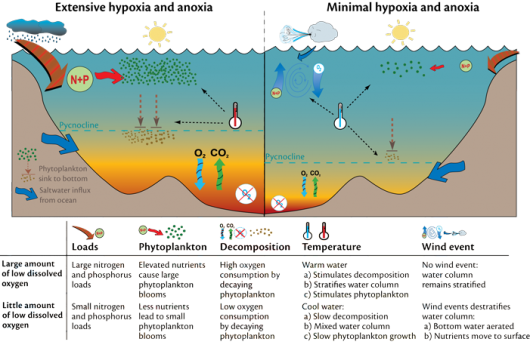Strangers in a Strange Land: Finding a Black Wall of Hell
From all appearances, driving through neighborhoods and walking in the French Quarter on a Saturday night, life looks fairly normal in New Orleans. There are beads and drunks, cat callers and punks.
Maybe, I wasn’t sure what to expect, or where to find the pathos that would define this time in the Gulf, but what’s universally apparent is a sense of ‘what now?’ But what is the what? That’s the rub exactly. Life here is the water, and boats are extension of the body.
Today, we met with John Caruso from Tulane University, a deepwater fish biologist. I asked him some pointed questions about what he thought about the future of the gulf, and what the ramifications were for deep water ecosystems. What he feared mostly was the unknown — sure, we’ve seen pictures all over the place of distressed charismatic mega fauna — a term used sort of insipidly to describe the creatures with which humans empathize, because they anthropomorphize them. But animals that live in the deep — the ugly fish that make up the base of the food chain — what is their fate? And what are the long term affects on phytoplankton and zooplankton? And what is the long term affect of heavy microbial action depleting the oxygen in the water?
Dispersant, as we have learned, has been used by BP to hide the oil. Some say it is to increase the surface area of the oil so as to accelerate microbial action in breaking it down, though evidence for this isn’t scientifically based. What dispersant does beyond hiding the oil visually, is that it makes it stratify in the water column and release volatile compounds into the ecosystem. As Caruso says, in one case the dispersed oil went down 3,000 feet and 20 miles long. For an animal, this is a black wall of hell. Yes, this kind of thing pulls at my heart strings because I hate that thought of subjecting the wild kingdom to human made catastrophes that they can’t process — a point made by one the members of our delegation, Bob Sallinger, Conservation Director for Portland Audubon Society:
“Imagine choking on something that you can’t even comprehend.”
The media, and the government, for their part, are quick to say, “the oil is going away” and “was this whole disaster maybe overblown?” and that only 26% of the oil remains. I have a serious problem with their math here. One, how on earth could anyone make an estimation to any degree of accuracy especially when most if it is now below the surface? And the other thing that angers me is a crime of omission. Barely any of the oil is going away from human intervention or action; most of it is because of microbes. Microbial action is better in warm water than say, Alaskan waters, but that’s only surface deep. Water temperature drops dramatically with depth, and if we’re talking about dispersed oil in the water column up to 3,000 feet, it’s impossible and arrogant to make estimates like this. Critics say this being pushed by BP in order to mitigate how much this will cost them.
But what’s becoming apparent, after the cap, is that the damage done the we see in pictures is only part of the story — the real answers are unknown, residing in the unseen hinter land of the deep.
By Stiv Wilson
[Image: Newsvine]
























5 COMMENTS
Stiv,
You go with the flow when it comes to anthropomorphism when you make the statement “For an animal, this is a black wall of hell.” That must be you talking right? You report that Caruso says that he fears the unknown (don’t we all a bit?) But the rest of the tone of this article is yours, yes? I think a lot of scientists are trying to turn the unknowns into knowns so the fear may go up or down with the data as it’s generated. Maybe there’s a hyperbolous “black wall of hell” but I kind of doubt it.
At least one of the huge underwater plume of dispersed oil (like Caruso referred to) was barely perceptible by the instruments that detected it and the dissolved oxygen levels were not critically low in the plume.
The media reporting of the governments “BP Deepwater Horizon Oil Budget: What Happened To the Oil?” has been bad. See…
http://www.noaanews.noaa.gov/stories2010/PDFs/DeepwaterHorizonOilBudget20100801.pdf
It does not say that only 26% “remains.” It says that 26 % is in the “residual” category… meaning that at the time the report was prepared, 26% was on or just below the surface or on-shore in some form. 16 % is naturally dispersed, 8% is chemically dispersed and 25% is evaporated or dissolved. So they are saying that (26+16+8 plus the “dissolved” portion of the 25%) or minimally 50%…. is still out there someplace. Spike Lee looks at the 26% “residual” number and spouts that the government says that 75% has “disappeared” and the “government is lying.” So read or re-read the report and don’t make the same mistakes Spike is making. You don’t need the press that bad. Spike has a movie to promote…
Good luck with this…the NW to GC regional linkage seem like a good idea but I’d suggest you get to know the area a bit better… and don’t run on emotion or make suppositions about the residents of the Gulf Coast that are culturally so different than you Portland natives that it’s almost impossible to explain. After 10 yeasr of going down there from the midwest. I’m getting the hang of it.
Tom
Stiv et al,
For the government report try this link…
The one in the other comment is the back-up data.
http://www.deepwaterhorizonresponse.com/posted/2931/Oil_Budget_description_8_3_FINAL.844091.pdf
Tom
Tom-
Thanks for the note. Its not so much that I’m attempting to push but I’m being affected, incredibly as I listen and hear stories as I move through this region. Straight up, I don’t accept noaa’s report and never have- even before arriving here. All I feel and witness is uncertainty, and talking to creidble scientists on our team, they have serious issues with the methodology that employed here. There exist very little data ( nearly none ) on how the dispersants actually behave in the open ocean. The epa made a educated guest at best on what was the best way to mitigate damage- what’s worse? Oil in marshes or stratified in the water column? The protocol isn’t based in science.
And hell yes, I worry about that and it troubles me greatly. Yes, perhaps at times my writing is a bit romantic, but everyone I talk to that isn’t a talking head views this report with a heavy dose of skepticism.
I hear you though- but that’s what I’m doing exactly- listening to the folks hear- you might not like what I come up with, but its not my agenda at all- its the culmination of the voices I hear. BP is actively buying science here, and they’re also placating the hurt with payments that amount to some, but not enough- just today I toured grand bayou with a third generation crabber whose dad received 5k a month from BP because his fishing grounds were closed- well they make that in three days down here and there is no promise that the checks will continue beyond august. So, what the hell am I suppossed to think?
Tom, come down, let’s have a beer. You can tell me all about spike.
I’m pre-disposed to be skeptical and you seem to be skeptical too.
The use of dispersants was a big science experiment. But a calculated one that I think was not as conspiratorial or nefarious as some people theorize. The experiment could go wrong.
If you want to learn more about the Gulf and the Gulf ecosystem… you need to ask people about menhaden…they call them “pogy.” Watch the menhaden populations over the next year or so and we may get a clue as to how the ecosystem is doing. They are at a sweet spot in the food chain. Talk to marine mammal specialists, fisheries biologists and sport fisherman about pogy.
But maybe some patience is in order as the science is developed. It’s always possible to find a few scientists who disagree with the methodologies or data of other scientists… so that doesn’t stress me that much. I try to sort through the totallity of it and then come to my own conclusions and not be sawyed too much by skeptical (celebrity) scientists.
You hit on a good point when you say that “BP is actively buying science…” but that happens all the time. The NSF, NOAA, USGS, DOD, DOI and EPA all actively buy science. And the environmental groups and the United Nations and IPCC, too. So one should always ask what it says about the buyer AND the seller.
Stay cool down there…
Tom
See what Spike Lee said…
http://www.cbsnews.com/stories/2010/08/08/national/main6754211.shtml
Leave a comment